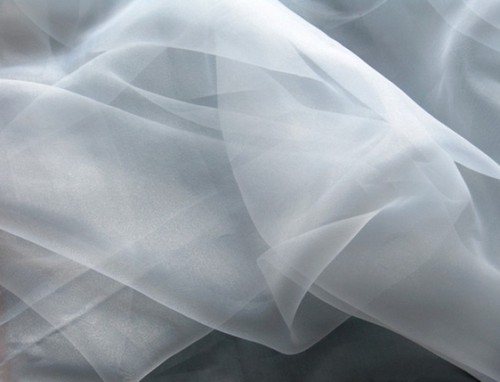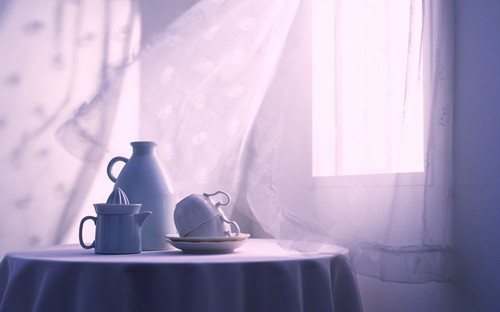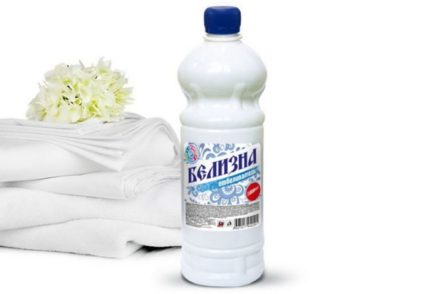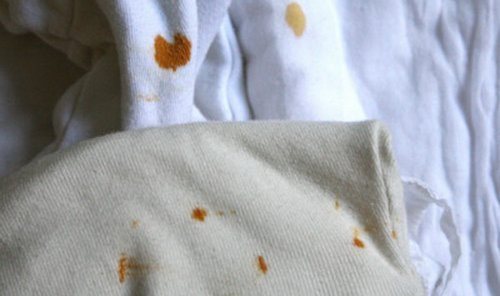Decorating and decorating a room with textile curtains plays an important role in the design of a modern room. The overall appearance of the room largely depends on the attractiveness of the drapes or curtains.

Over time, even the highest quality tulle loses its original appearance, there may be many reasons for this:
- Constant washing;
- Accumulated dust or soot;
- Tobacco smoke;
- Smoke from a stove or fireplace;
- Proximity of heating equipment and much more.
Over time, tulle acquires a gray or yellowish tint, which spoils the appearance of the room and looks untidy.
Means and methods for caring for textiles directly depend on what fiber the material is made from. Guided by the rules and recommendations, you can give snow-white beauty to old curtains without completely ruining them.
How to return tulle to its original whiteness?
Regardless of the type of material, before sending it for washing, it is necessary to shake out (shake) any dust and soot. After this, place the material in a solution of salted water (3 tablespoons per 10 liters) for 15-25 minutes and wash thoroughly.
- It is necessary to work with synthetic materials only with delicate, gentle means, thereby protecting the fabric from damage and wear. Synthetic fibers should never be boiled.
- Delicate fabrics are best washed folded into a rectangle and only by hand. To do this, choose room temperature water, otherwise the yellowness will not be washed off, but on the contrary, it will remain forever.
- Linen and cotton, from which tulle is made, can only be processed in water, no warmer than 40 degrees and preferably by hand. If washing will be done in a washing machine, select the appropriate mode for the fabric.
- Nylon tulle is the most difficult material to wash compared to other fabrics. Washing should be done in water no higher than 30 degrees or in a washing machine set to delicate mode, always “without automatic spin.” It is strictly prohibited to treat nylon fabric in hot water.
Whitening worn tulle
If, after washing the fabric, there is no expected result, you can begin the process of bleaching the tulle:
- Any chemical specifically purchased for such purposes should be suitable depending on the type of fabric.
- A bleaching agent is added to the water strictly in accordance with the manufacturer's instructions.
- Only after the bleach has dissolved in water, place the tulle in the basin (not vice versa!) and make sure that the fabric is completely covered with the solution.
- The soaking time directly depends on the type of fabric, and is regulated by the instructions provided by the manufacturer. If you do not follow the washing and soaking rules, the tulle can be completely damaged.
- After all measures have been taken, the tulle should be rinsed in cool water, allowed to drain naturally (do not squeeze!) and hang the fabric slightly damp (do not iron!).
- In order to give the fabric a pleasant aroma and softness, when soaking, you can add conditioner to the bleach solution.

Application of "natural pharmacy"
Many women prefer natural fabric bleaching recipes over chemical means. This is especially true when it comes to delicate, delicate materials from which tulle is made.
Among the most proven and reliable methods, there are 6 effective natural recipes for giving pristine whiteness:
- Diamond green;
- Using coarse salt;
- Hydrocyanic substance;
- Application of hydrogen peroxide;
- Standard laundry soap;
- Potato starch.
Zelenka
The use of brilliant green is one of the most effective substances that will help get rid of the yellowness of tulle.
To do this, you need to dissolve in warm water:
- 3 tbsp. coarse salt;
- 10 drops of greenery.
Be sure to wait until all components are completely dissolved and the sediment settles. The material that is being prepared for bleaching must be lowered into a basin with the prepared solution for 3-5 minutes, removed and hung to drain. The dried tulle must be carefully folded and wrapped in a dry sheet to absorb any remaining water (drops).
Blue
Hydrocyanic substance or “blue” will help to quickly and effectively get rid of the gray and yellowness of the fabric, even if the fabric is processed in a washing machine.
To do this, pour blue powder (2 tablespoons) into a tray designed for softening conditioner.
If bleaching will be done manually, the tulle will need to be dipped in a solution with bluing for 2-3 minutes. It is recommended to constantly turn the fabric over during the soaking process so that the solution is distributed evenly.
Salt
Bleaching drapes and curtains in a saline solution is the most common option among traditional methods.
To do this, you will need to dissolve soda in water (1 tablespoon per 10 liters of water); for greater effectiveness, you can add simple washing powder. Instead of coarse salt, in some cases (due to lack of ingredients) soda is used.

Peroxide and ammonia
Peroxide or, as an analogue, ammonia, is a bleach with an ideal chemical composition.
If used:
- hydrogen peroxide – 2 tbsp. for 10 l. water;
- ammonia - 1 tbsp. for 10 liters of water.
For such treatment, water must be heated to 40 degrees (maximum!) and the fabric must be soaked for at least 30-40 minutes, after which it must be washed and rinsed thoroughly.
Laundry soap
Laundry soap is best suited for delicate fabrics and is most suitable for gentle washing of white tulle.
Half a piece of laundry soap should be grated on a fine grater and poured into a pan in which water has already been placed. The solution of soap and water should be brought to a boil and immediately removed from the heat, then add cold water and soak the yellowed tulle in this for 7-8 hours. After which you will need to wash the fabric in the standard way and rinse thoroughly.
Starch
Potato starch is perfect for bleaching organza and nylon tulle, as the most gentle, gentle product.
You will need to dissolve 250 g. potato starch in 10 liters of water and dip a pre-washed cloth into the solution for 10 minutes.After this, you need to thoroughly wash the tulle, and the changes will immediately be visually visible: the yellowness will go away, the fabric will acquire its original appearance and will hold its shape perfectly.
The advantage of using starch is that after such treatment, the likelihood of further settling of dust and soot on the fabric is reduced; dust particles fall on the tulle and fall on the starch, which is easier to remove during subsequent washing.
Important! Directly after washing and bleaching the material, it is not recommended to iron tulle; it is recommended to simply hang the fabric on a curtain rod (in a permanent place). So, under the force of gravity, the fabric will smooth out naturally after washing.
White curtains have always symbolized purity and chic, so it is very important that the tulle always remains snow-white.









